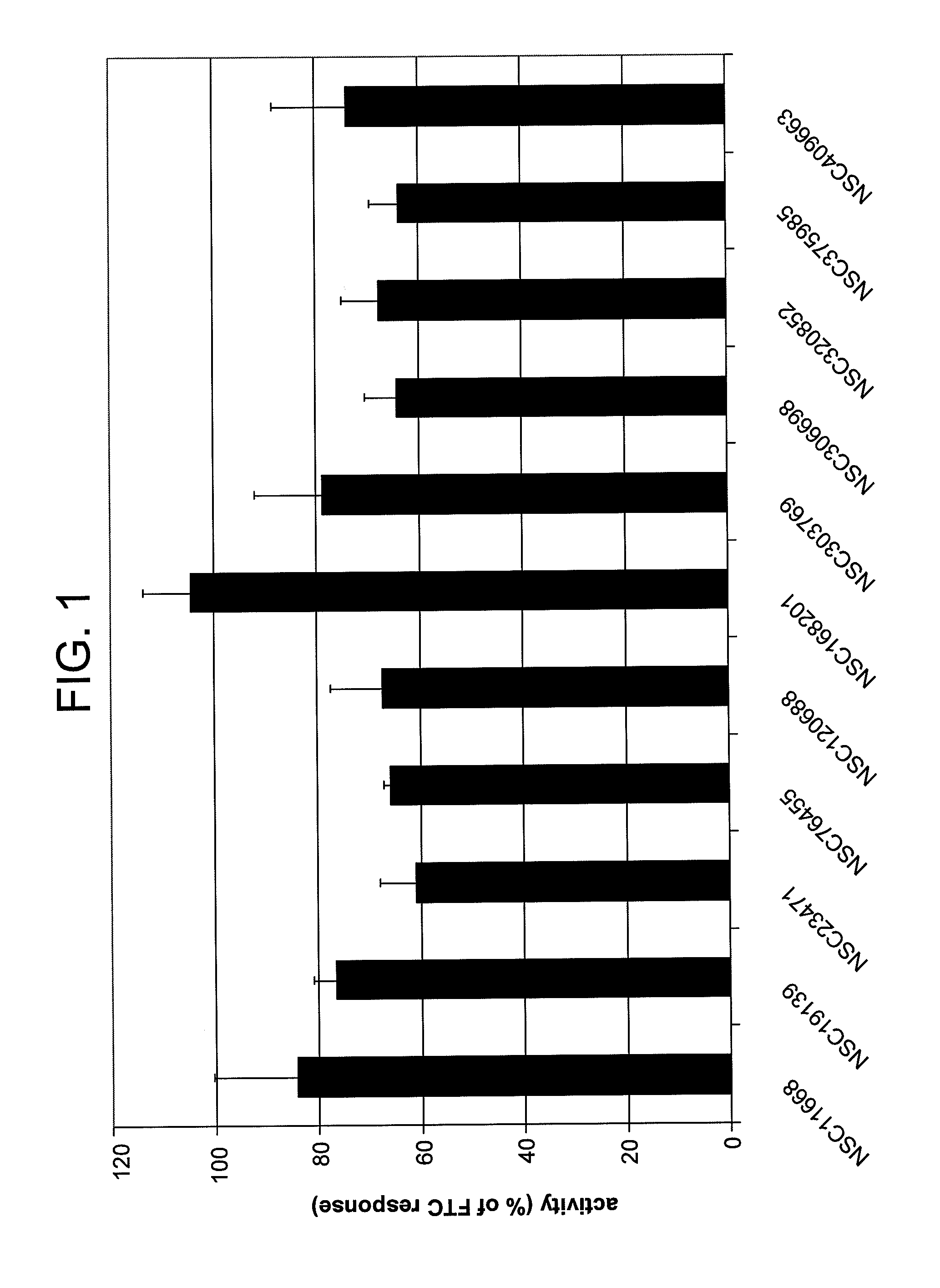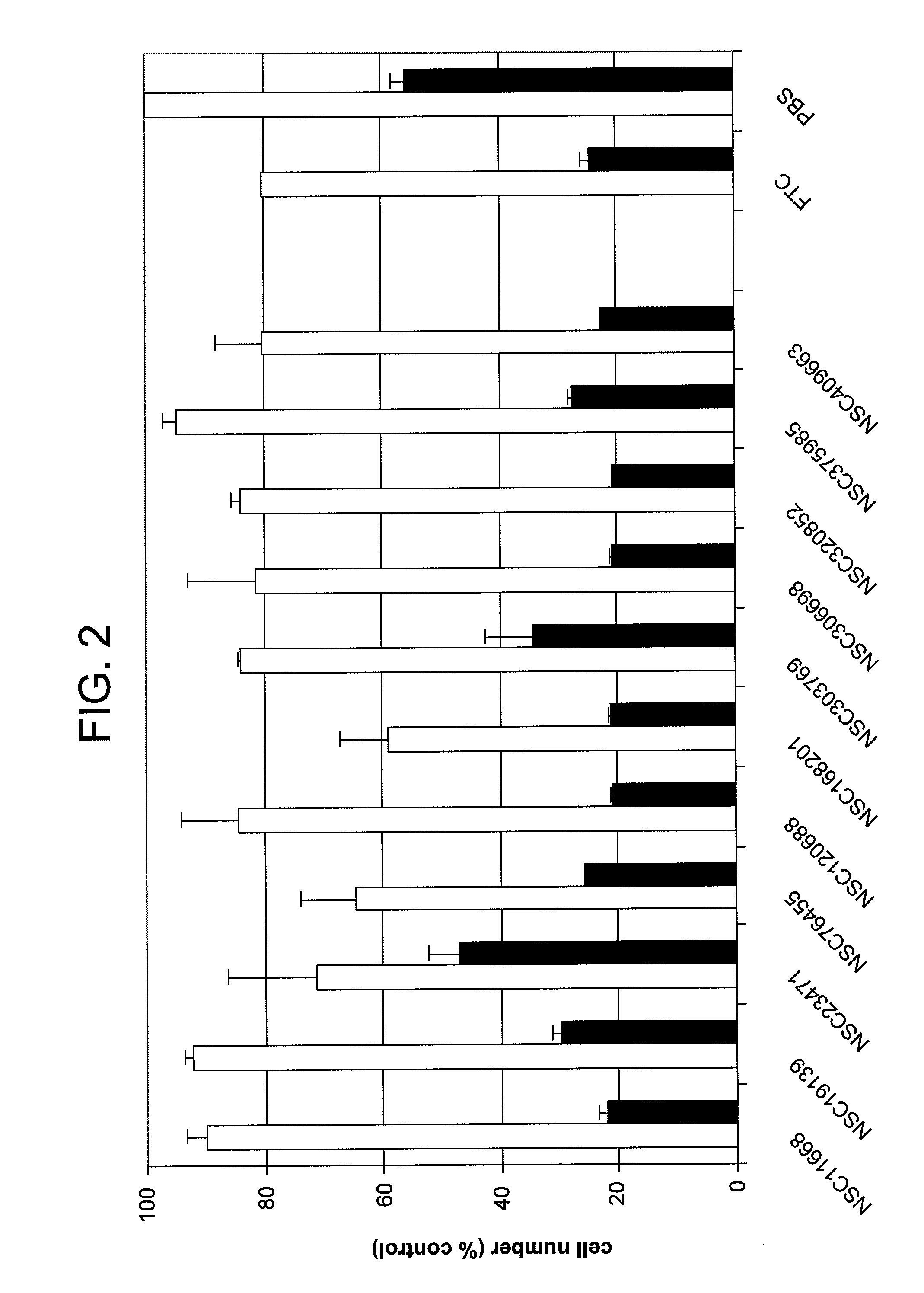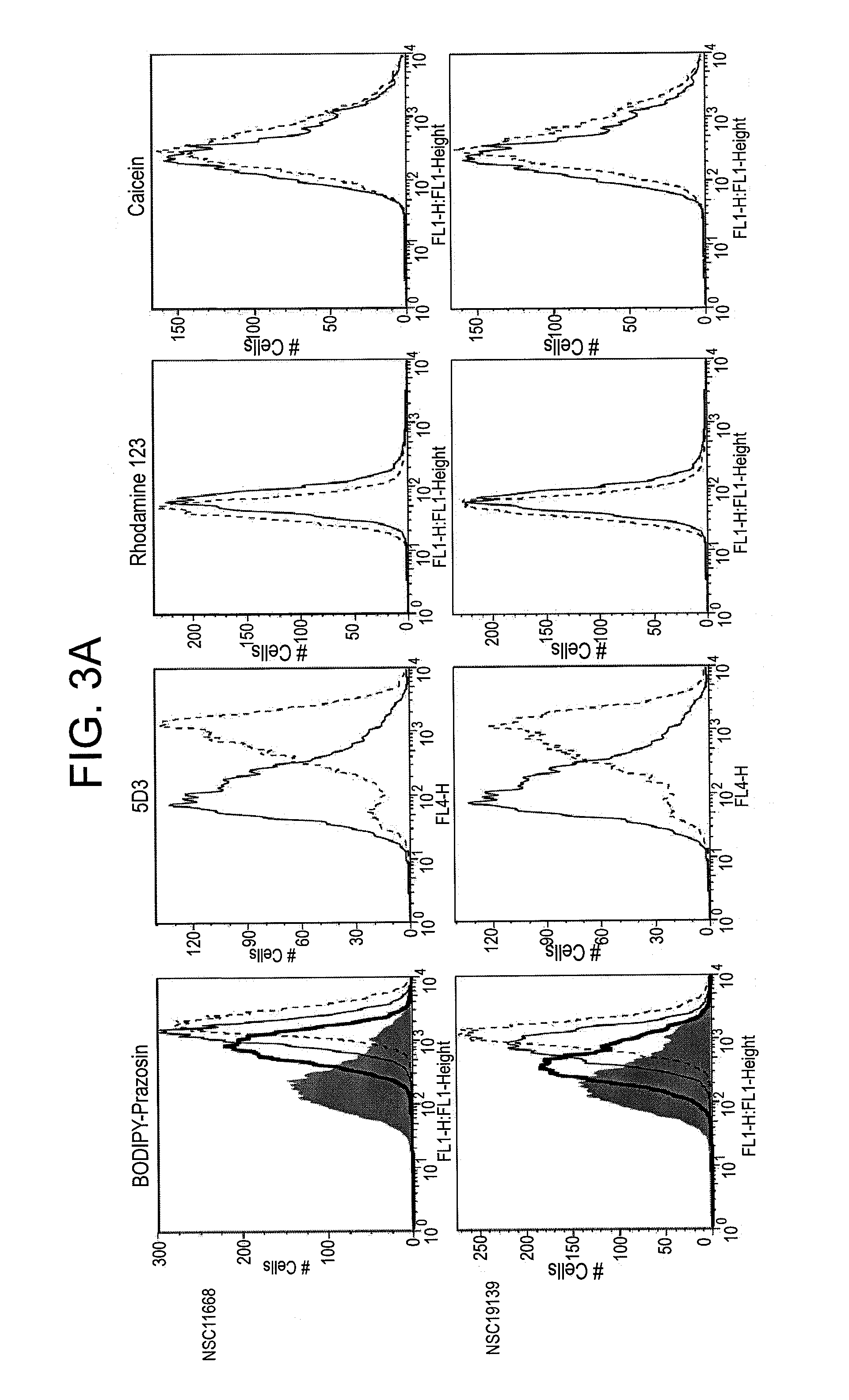Method of inhibiting ABCG2 and related treatments
a technology of abcg2 and related treatments, which is applied in the direction of biocide, heterocyclic compound active ingredients, drug compositions, etc., can solve the problems of few, if any, clinically useful inhibitors of abcg2 activity reported
- Summary
- Abstract
- Description
- Claims
- Application Information
AI Technical Summary
Benefits of technology
Problems solved by technology
Method used
Image
Examples
example 1
[0059]This example demonstrates a screening assay for ABCG2 inhibitors in accordance with an embodiment of the invention.
[0060]To prepare the cell culture, NCI-H460 human lung non-small-cell carcinoma cells (National Cancer Institute, Frederick, Md.) are selected for over-expression of ABCG2 by maintenance in RPMI1640 / 10% FBS supplemented with 20 nM mitoxantrone (Robey et al., Biochim. Biophys. Acta, 1512: 171-82 (2001)). After removal of mitoxantrone, cells are further grown in the same medium without mitoxantrone for 5-30 days. These cells are designated NCI-H460 / MX20. Parental cells (low ABCG2 expression) (Robey et al., vide supra) are maintained in the same medium without mitoxantrone. ABCG2-transfected or MDR1-transfected (i.e. Pgp-expressing) HEK293 cells are maintained in 2 mg / ml G418 as previously described (Robey et al., Br. J. Cancer, 89: 1971-8 (2003)). MRP1-transfected HEK293 cells are maintained in 5 μM etoposide. MCF-7 FLV 1000 cells are maintained in Richter's medium ...
example 2
[0063]This example demonstrates an assay to determine the ability of compounds to sensitize cancer cells to killing by mitoxantrone in accordance with an embodiment of the invention.
[0064]The ability of compounds to sensitize NCI-H460 / MX20 cells to killing by mitoxantrone is assessed as described in Henrich et al. (J. Biomol. Screen, 11: 176-83 (2006)). ABCG2 over-expressing cells or parental cells are treated with mitoxantrone in the presence or absence of 10 μM compound (or 1 μM FTC) and cell numbers assessed after 2 d by an XTT assay (Scudiero et al., Cancer Res., 48: 4827-33 (1988)). Final DMSO concentration is 0.2% (v / v).
[0065]FIG. 2 illustrates each compound's ability to restore mitoxantrone sensitivity to cells overexpressing ABCG2. Unselected NCI-H460 cells are sensitive to killing by mitoxantrone. After 2 days in the presence of 30 μM mitoxantrone, cell numbers are 21.6±1.6% (sd) of control (vehicle). None of the compounds tested are significantly cytotoxic against parental...
example 3
[0066]This example demonstrates that compounds in accordance with an embodiment of the invention can inhibit ABCG2-mediated transport using BODIPY-prazosin as a substrate (Robey et al., Br. J. Cancer, 89: 1971-8 (2003)). This example also demonstrates that exemplary compounds inhibit MRP1-mediated calcein efflux (Robey et al., 2003, vide supra and Alvarez et al., Mol. Pharmacol., 54: 802-14 (1998)).
[0067]Transfected HEK293 cells expressing ABCG2, Pgp, or MRP1 are trypsinized and incubated in complete medium (phenol red-free Richter's medium with 10% FCS and penicillin / streptomycin) containing 200 nM BODIPY-prazosin, 0.5 μg / ml rhodamine 123 or 200 nM calcein AM, respectively, in the presence or absence of the desired concentration of inhibitor for 30 min at 37° C. The positive controls for inhibition of ABC transporters are 10 μM FTC for ABCG2, 3 μg / ml valspodar for Pgp and 25 μM MK-571 for MRP1. Cells are then washed and incubated in substrate-free medium continuing with or without ...
PUM
| Property | Measurement | Unit |
|---|---|---|
| body weight | aaaaa | aaaaa |
| concentration | aaaaa | aaaaa |
| concentration | aaaaa | aaaaa |
Abstract
Description
Claims
Application Information
 Login to View More
Login to View More - R&D
- Intellectual Property
- Life Sciences
- Materials
- Tech Scout
- Unparalleled Data Quality
- Higher Quality Content
- 60% Fewer Hallucinations
Browse by: Latest US Patents, China's latest patents, Technical Efficacy Thesaurus, Application Domain, Technology Topic, Popular Technical Reports.
© 2025 PatSnap. All rights reserved.Legal|Privacy policy|Modern Slavery Act Transparency Statement|Sitemap|About US| Contact US: help@patsnap.com



